Table of Contents
AUS-8 and D2 are two of the most popular types of steel used in knives.
In this blog post, we will compare and contrast these two types of steel, explaining the advantages and disadvantages of each so that you can make an informed decision about which type of knife is right for you.
Aus-8 is a Japanese stainless steel that is known for its durability and corrosion resistance.
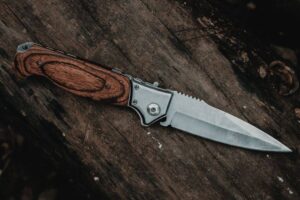
It is a tough steel that can take a beating, making it a good choice for those who use their knives regularly or for everyday carry.
However, AUS-8 is not as hard as some other types of steel, so it might not hold its edge as well as some other knives would.
The AUS-8 is made up of several components such as:
- Carbon: 0.75%
- Chromium: 14.5%
- Manganese: 0.5%
- Molybdenum: 0.3%
- Nickel: 0.49%
- Silicon: 1%
- Vanadium: 0.26%
Best AUS-8 Knives – My Top 2
CRKT Oxcart
One of the best knives with the AUS-8 steel is CRKT Oxcart, with a sturdy finish built to handle anything. Click here to buy it.
Ka-Bar Dozier Folding Hunter
One of the best knives with AUS-8 steel is Ka-Bar Dozier Folding Hunter, which weighs 2.3 oz.
Click here to buy it.
Pros of AUS-8
- Durable and easy to maintain.
- The steel is also relatively inexpensive, making it a good option for budget-minded shoppers.
Cons of AUS-8
- AUS-8 is softer when compared to D2 steel, this makes it more prone to corrosion.
- AUS-8 also requires more frequent sharpening and will dull more quickly.
D2
D2 is an American stainless steel that is also known for its durability and corrosion resistance. It is a harder steel than AUS-8, so it will hold its edge longer.
However, because it is a harder steel, it is also more brittle and can break if not properly cared for.
D2 is one of the most well-known tool steels, and it’s not hard to see why.
It’s known for its edge retention, being able to stay sharp after prolonged use, and its durability. However, just like any other steel, D2 is not perfect.
For one, it can be more difficult to sharpen than other steels. D2 is also not stainless, meaning that unless it is frequently oiled, it is going to be susceptible to corrosion.
While it may be more difficult to maintain than other steels, it is still worth using D2 for its excellent edge retention properties.
D2 is mainly used for knives and tools because it can be hardened to 60-62HRC. D2 can be hardened to a high level and still keep its strength, which makes it hard to break and wear down.
There are also many other reasons why D2 is used in knife steel. For one, it’s easy to sharpen. It has high compressive strength and can run at high temperatures.
D2 is made of the following compositions:
- Carbon: 1.5%
- Chromium: 12.00%
- Vanadium: 0.90%
- Molybdenum: 0.80%
- Magnesium: 0.45%
- Silicon: 0.40%
- Sulfur: 0.02%
Best D2 Knives – My Top 2
Ontario Rat 1
One of the best knives with D2 steel is Ontario Rat 1 OD Green D2 Steel with a great finish.
Click here to buy it on Amazon.
Cold Steel Leatherneck-SF
The other knife with the D2 steel is Cold Steel Leatherneck-SF which is very efficient. Click here to buy it on Amazon.
Pros of D2 Steel
- Good edge retention
- Good toughness
- Wear resistance.
Cons of D2
- Harder to sharpen than its stainless steel counterparts,
- Will develop a patina
- More likely to stain.
What’s the difference between AUS-8 and D2 steel?
All steels are made up of a combination of carbon and iron with varying amounts of trace elements like chromium and nickel. The ratios of each element in the steel determine its grade and properties.
AUS-8 and D2 are two different steel grades commonly used for high-quality knife blades.
AUS-8 is a low-carbon steel that’s designed to be relatively soft so that it’s easier to sharpen and maintain than many other knives.
As low-carbon steel, AUS-8 is also relatively inexpensive to make and purchase.
However, AUS-8 also comes with drawbacks compared to D2 steel, making it a less desirable material for knife blades.
One of the most significant issues with AUS-8 is that it’s highly susceptible to corrosion. AUS-8 is “sulfur-resistant” steel that’s made softer than it could be so that it’s more accessible to machine and form.
This softness, combined with its low carbon content, leaves AUS-8 with poor corrosion resistance.
D2 steel is a high-carbon steel that’s hardened to a greater degree than AUS-8. This extra hardness makes D2 steel much more durable but makes it difficult to sharpen on machines.
D2 steel is much more expensive when compared to AUS-8, but it’s also more durable and corrosion-resistant.

Which is better: D2 or AUS-8?
D2 steel is the better choice for knife blades thanks to its higher hardness and greater corrosion resistance.
While both steels are almost certainly very suitable for use in knife blades, D2 is the clear winner when compared on an even playing field.
AUS-8 is cheaper and softer steel that’s better suited to use in other applications.
AUS-8 can be excellent steel for certain parts of a knife, such as the handle scales, but it’s not a good choice for the blade itself.
On the other hand, D2 steel is high-quality steel that performs well in a variety of applications. D2 is harder and more durable steel that is better suited to use in a knife blade than AUS-8.
So, what makes D2 steel stronger than AUS-8? Well, for starters, D2 is easier to harden, this gives it an advantage in terms of strength.
Additionally, D2 contains more elements that make it harder steel overall. With these factors considered, it’s pretty clear why D2 blades tend to be stronger than their AUS-8 counterparts.
AUS-8 is more corrosion resistant because it contains a high amount of chromium – 14% to be exact. For a steel to be classified as stainless, it must contain at least 10% chromium.
So, with such a high chromium content, this knife material is less likely to rust over time no matter how long you use it or what you use it for.
Both AUS-8 and D2 are great choices for full knives because they are both durable and corrosion-resistant. If you are looking for a knife that will hold its edge longer, then D2 is the better choice.
However, if you are looking for a knife that is tougher and less likely to break, then AUS-8 is the better choice.
Whichever type of knife you choose, be sure to care for it properly to ensure that it lasts as long as possible.
Takeaway
When it comes to knife steel, both D2 and AUS-8 have their unique advantages and disadvantages.
It’s important to know what you’ll be using your knife for before you decide which steel to go with.
These two sheets of steel are both excellent choices for a knife blade, but D2 is the better option as a result of its superior hardness and corrosion resistance.

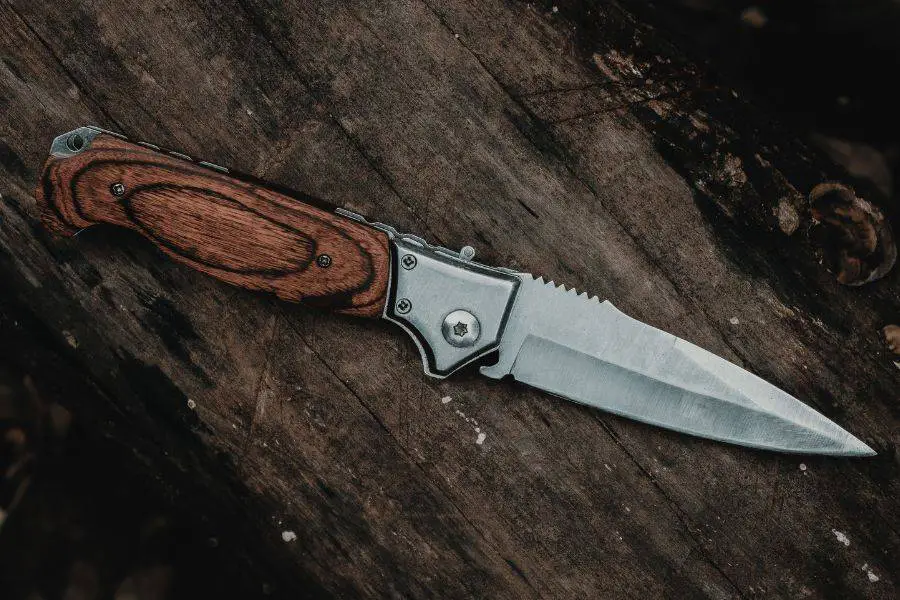
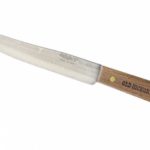
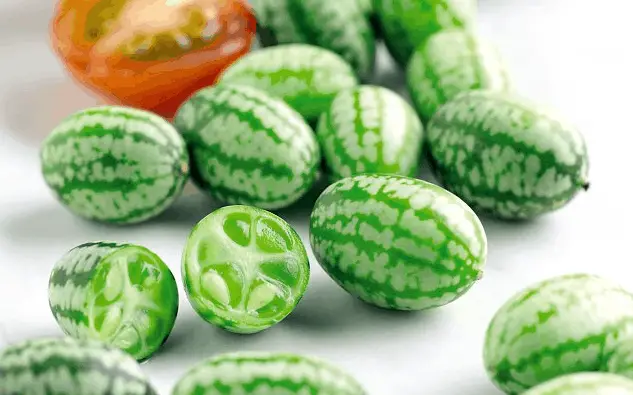
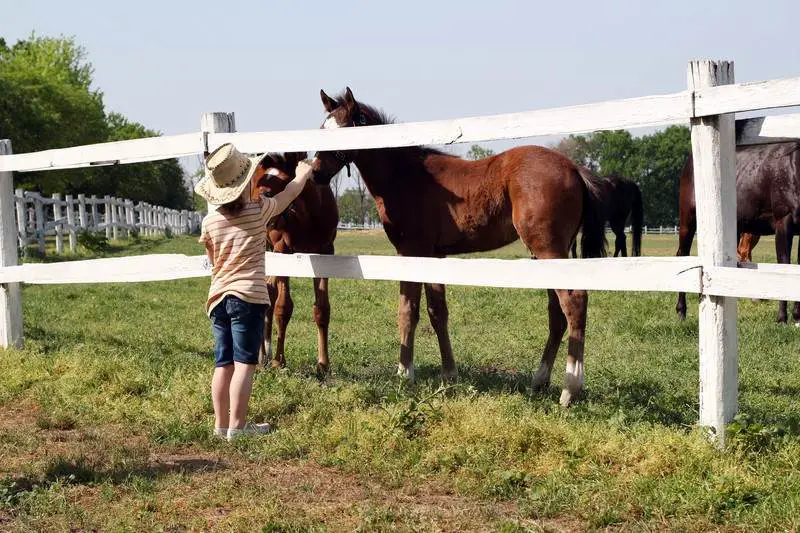
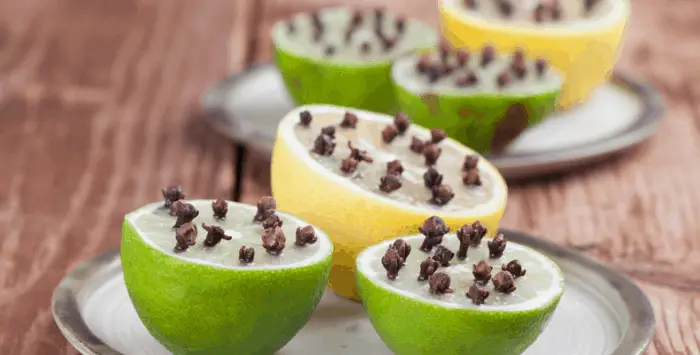
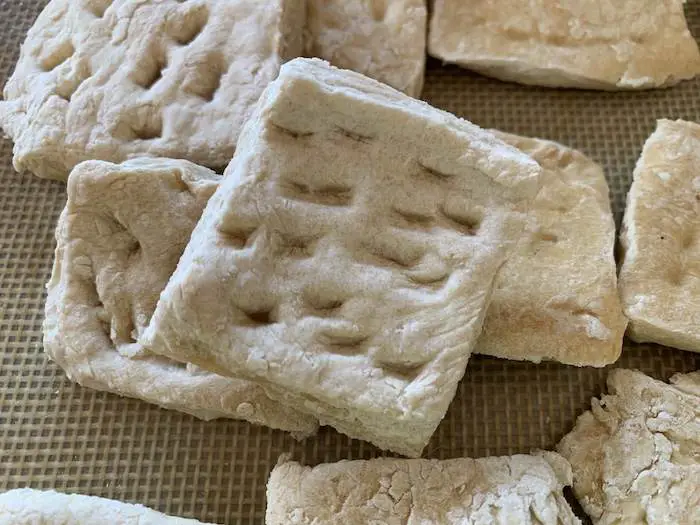


![How To Fix Gap Between Door And Floor [Guide] How To Fix Gap Between Door And Floor [Guide]](https://homesteadandprepper.com/wp-content/uploads/2021/09/How-to-Fix-Gap-between-Door-and-Floor-150x150.jpg)